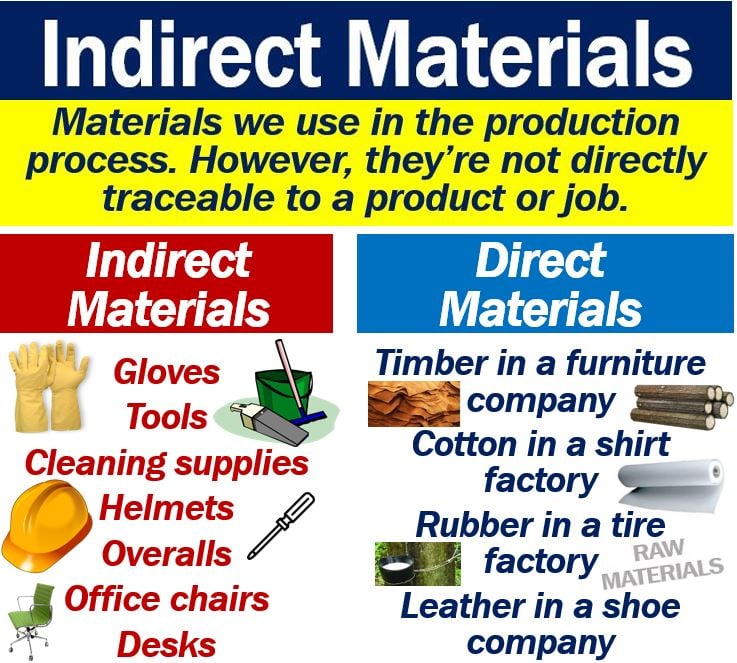Indirect materials are materials that a company uses in the production process. However, it cannot link them to a specific job or product. They belong to a category of indirect costs. In accounting, we treat indirect materials as overhead costs (or operating expenses) and treat them accordingly.
Cleaning chemicals, protective devices, glue, oil, and disposable tools, i.e., consumables, are usually indirect materials. They make the production process safer or more efficient. However, we cannot readily link them to a specific job or product.
It is sometimes difficult to determine whether to class some things as indirect or direct materials. We may use some of them in the production process. However, either their cost is insignificant or they are not conveniently traceable. Therefore, we class them as indirect materials.
Accounting Tools says the following on its website regarding the term:
“Indirect materials are materials used in the production process, but which cannot be linked to a specific product or job.”
“Alternatively, they may be used in such insubstantial quantities on a per-product basis that it is not worthwhile to track them as direct materials.”

Companies do not normally track indirect materials through a formal inventory record keeping system. Instead, they use an informal system to determine when to order more.
Direct and indirect materials
In accounting, it is important to be able to differentiate between indirect and direct materials.
Direct
Direct materials are materials which we can easily identify. We can also easily measure and trace them directly to the production of something.
In other words, we can conveniently measure and charge direct materials to the cost of production.
This type of material is also part of the finished good.
Timber, for example, is a direct material in a factory that makes furniture. In a shoe-making company, leather is a direct material, and so is wool in a factory that makes clothes.
Indirect
We cannot conveniently identify and allocate indirect materials to a cost unit or production.
They do not form part of a finished product. Wood, for example, is part of furniture in a furniture factory. However, cleaning supplies are not.
We use soap, for example, to clean the factory floor, but not to make furniture. Therefore, soap is an indirect material.
During the production process, we consume indirect materials. However, they do not form part of the finished product, and we cannot link them to a specific job.
